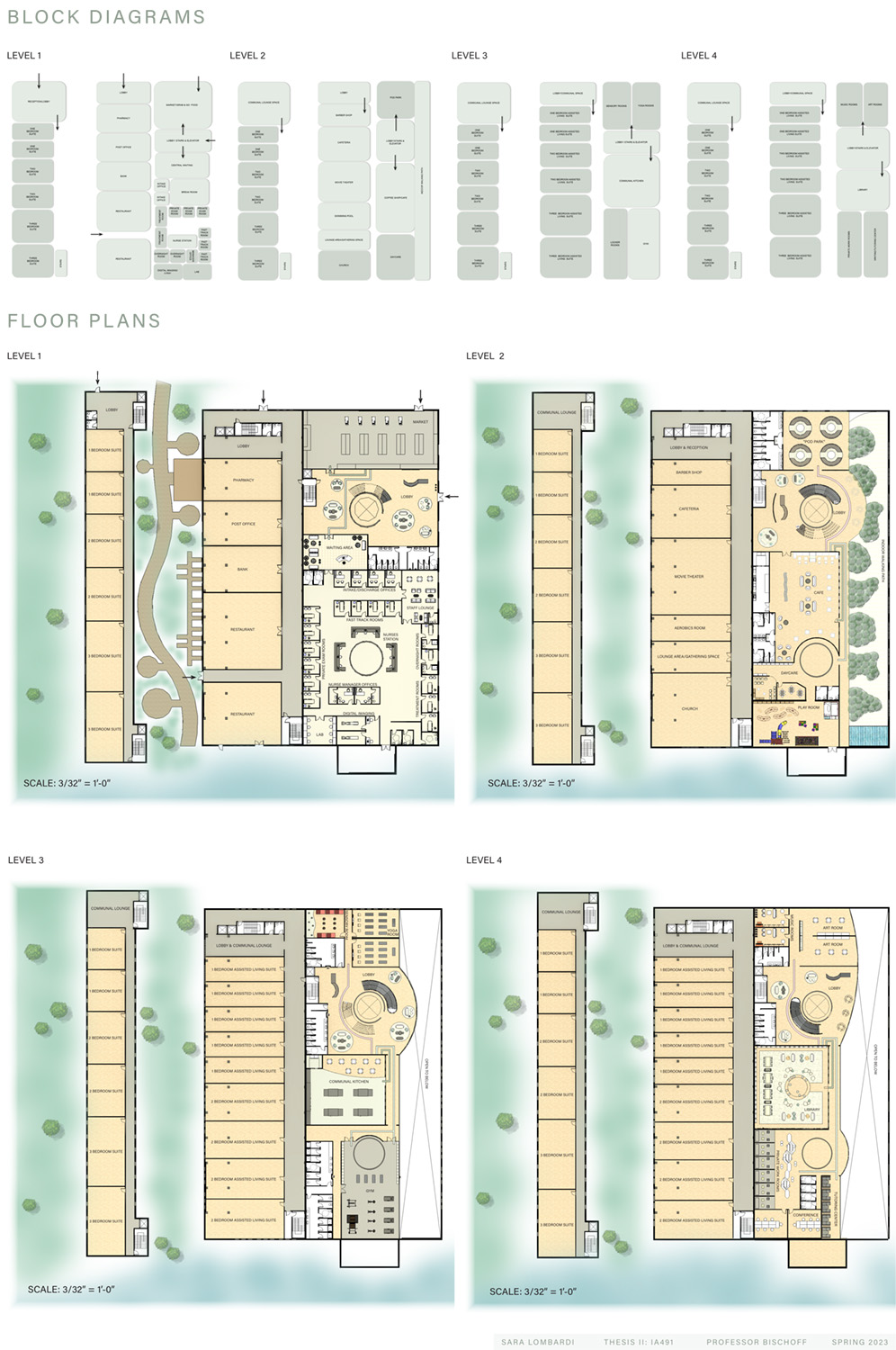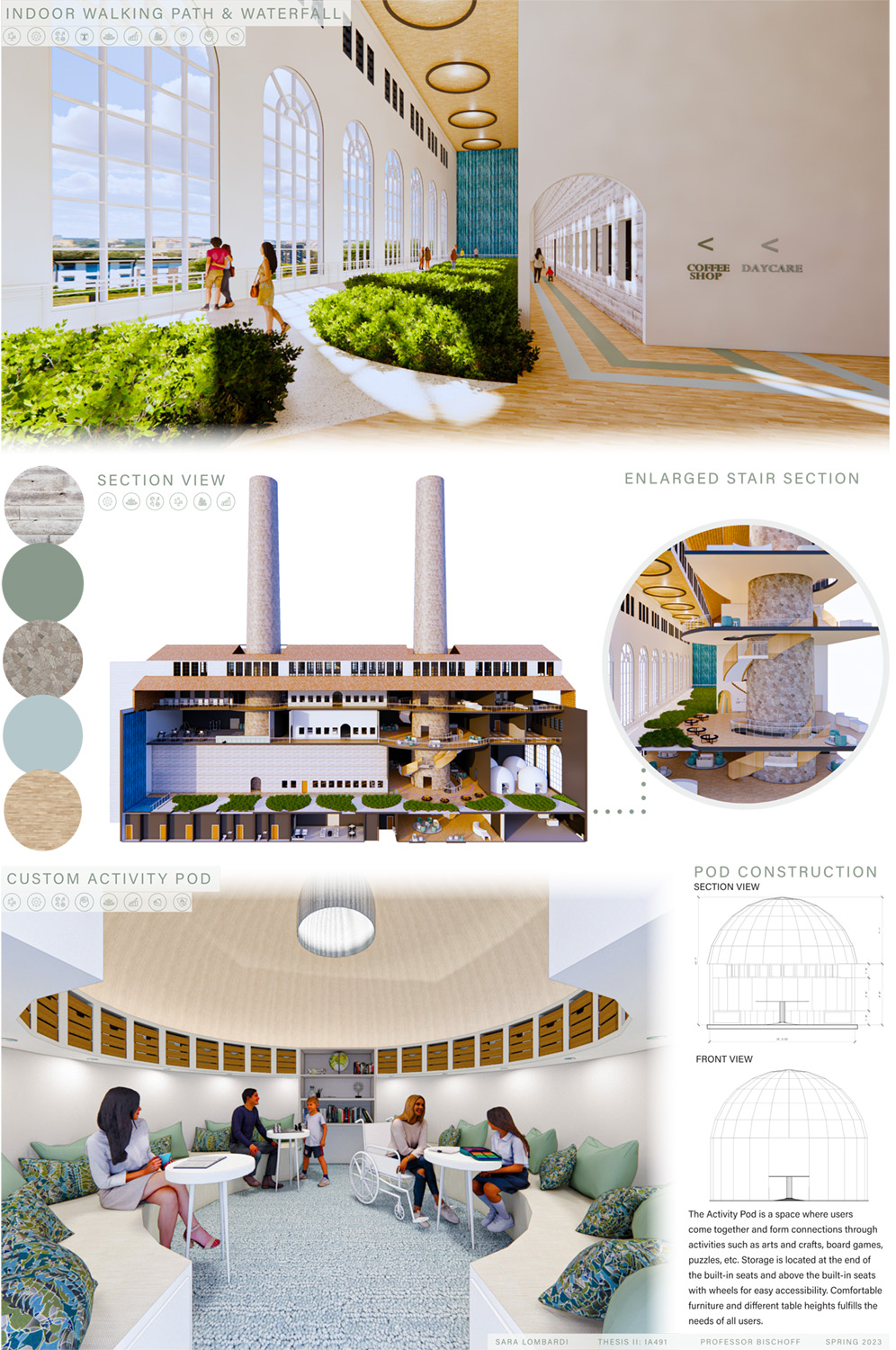Artist Biography
Sara will be graduating this spring with a Bachelor of Fine Arts in Interior Architecture. During her time at Endicott, she continued to be recognized on the Dean’s List and is a member of the Mortar Board National College Senior Honor Society and Kappa Pi International Art Honor Society. Sara completed three internships at residential design firms on Nantucket and in Melrose. She is eager to start her post-graduate career while advancing her knowledge by fulfilling her NCIDQ certification in the future. Her thesis inspiration derived from her interest in residential design, as well as the creation of inclusive and communal environments in terms of aging-in-place and Universal Design.
Thesis Abstract
The gap between generations is evident in relationships, cultures, knowledge, and daily life. Some of the most prevalent problems seen in nursing homes include the process of growth and development, loneliness, hopelessness, and boredom. Intergenerational communities create a space for connections and social interactions between generations. Glenwood Generations’ mission is to bring generations together to create meaningful connections with one another while taking aging-in-place and Universal Design into consideration. Through multi-generational relationships, individuals are able to thrive in areas such as physical and psychological health, enhancement of aging, development, daily life, social interactions, increased independence, trust in one another, and reiteration of intergenerational equity. Key design solutions include accessible and functional shared spaces and activities to foster purposeful connections and relationships. These include interior and exterior walking paths, communal spaces such as activity pods, a communal kitchen, a library, and healthcare with a central waiting area. For easy wayfinding throughout the space, the use of color and signage is designed for all ages and individuals with impairments. The presence and interactions between young, middle, and older generations in passing and within shared spaces will have a positive impact on individuals, families, and the built environment.
How can we create a community where younger, middle, and older generations are able to interact with one another in an environment that positively benefits one another physically, psychologically, and emotionally while keeping in mind aging-in-place, Universal Design, as well as the needs of each group of individuals?




